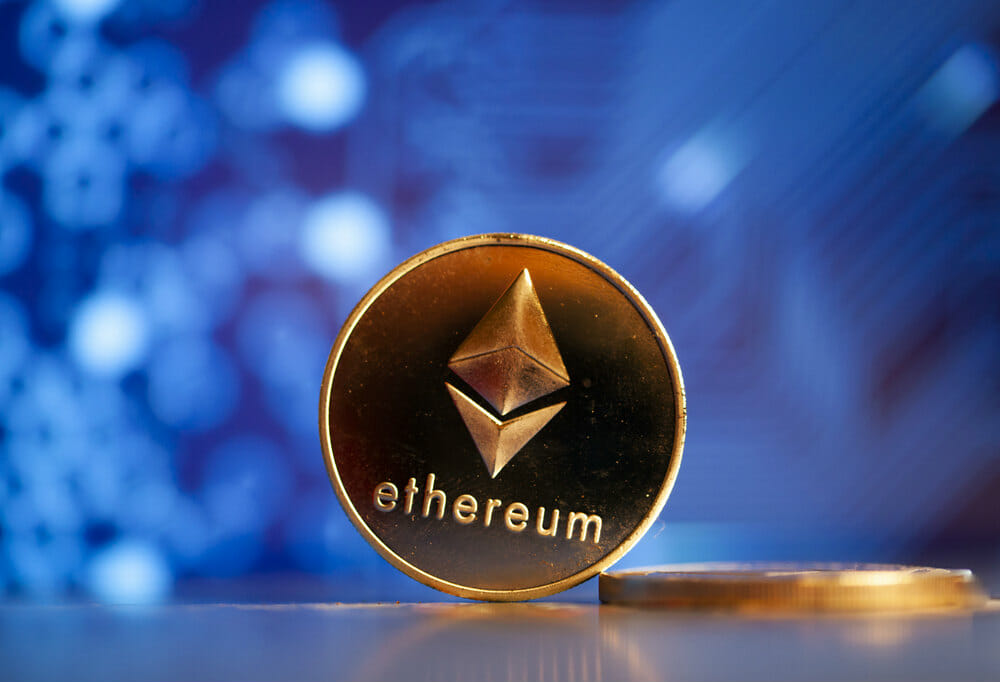As with countries, Ethereum has citizens, a government, a currency, corporations, a financial market, and relationships with other blockchains. The supply of ETH is comparable to the banknotes and coins in circulation of a country.
A study by Electric Capital states that millions of Ethereum users pay fees for processing their transactions. If it were only a payment network, its value would depend on the trading volume and the total costs. Once determined, those parameters could be comparable to existing payment networks such as Visa and MasterCard.
In 2020, those two payment networks processed USD 17.7 billion, with an average cost of 2.5% to 3% per transaction. Besides, the trading volume of Ethereum in the last 12 months was USD 989,000 million, with USD 1,640 million in transaction expenses. Although these are different periods, the trading volume of Ethereum would be about 5.58% of that of Visa and MasterCard.
In May, Ethereum processed stablecoin transactions of between USD 20 billion and USD 30 billion a day. In an annual period, those figures represent a volume between USD 7.3 trillion and USD 11 trillion.
In addition, there are transactions for a volume of USD 10 billion worth of ETH per day, or USD 3.7 trillion per year. The report indicates that miners receive an average income of USD 60 million a day or USD 21.9 billion a year. In the case of stablecoins, the fees are around 0.16% of the trading volume.
Ethereum is a Digital Country While ETH is Its Currency
According to the study, Ethereum is similar to a country in that it has citizens (wallets and users) and a government (Ethereum Foundation). Additionally, it has a currency (ETH), corporations (DAOs and Dapps), a financial market (DeFi), and relationships with other digital countries (bridges between different chains).
That comparison would include contrasting the velocity of the Ethereum money with that of other countries. That measurement is the ratio between the gross domestic product (GDP) and the money supply. For example, the study states that it would be possible to estimate the GDP of Ethereum in 2030 to calculate the potential value of the network.
The Money Supply on the Ethereum Network
The supply of ETH is comparable to the M1 of a country, that is, the banknotes and coins in circulation. Concerning the GDP, it is preferable to use an equivalent of M2, which considers M1, savings deposits, and money market securities.
According to the report, the equivalent components of Ethereum to integrate M2 would be the ETH and DAI in users’ portfolios (an equivalent of M1), ETH and tokens in exchange portfolios (deposits), DeFi products such as Yearn and Curve (deposits savings), locked deposits in DeFi, and products such as Aave and Compound (money markets).
The study examines various countries and states, with present and future GDP scenarios around USD 2 trillion, 5 trillion, 10 trillion, and 20 trillion. It mentions that the GDP of California was USD 3.1 trillion in 2020 and that USD 2 trillion will be 1.46% of the world’s GDP in 2030. It also highlights that the estimated GDP in 2030 will be USD 5.5 trillion in Japan and about USD 22 trillion in the United States.
A limitation regarding those estimates is the uncertainty about the expected GDP value for Ethereum. Several blockchains competing with Ethereum could capture large portions of the market. The authors also mention one of the largest NFT markets, not using Ethereum but the Flow blockchain.
By Alexander Salazar











